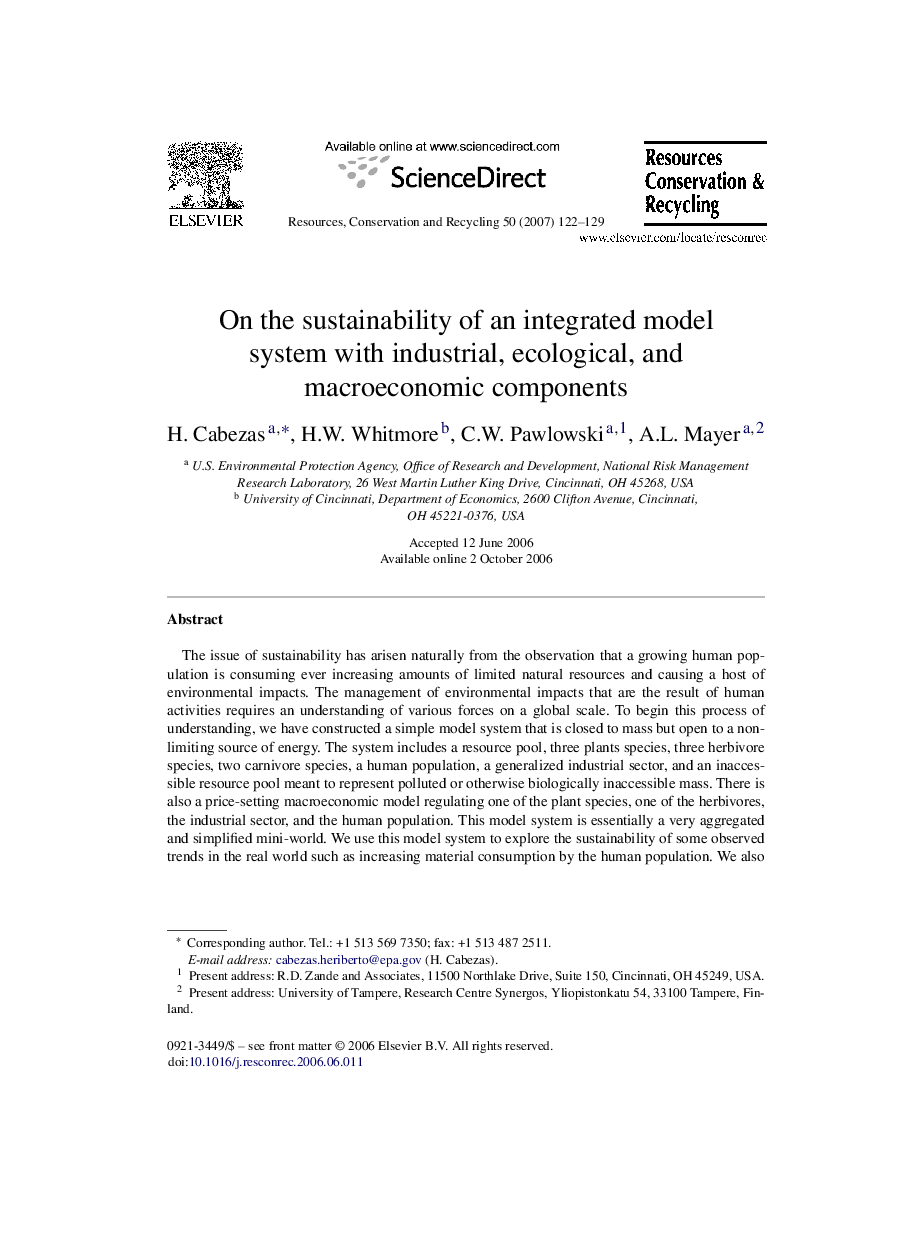| Article ID | Journal | Published Year | Pages | File Type |
|---|---|---|---|---|
| 1064142 | Resources, Conservation and Recycling | 2007 | 8 Pages |
The issue of sustainability has arisen naturally from the observation that a growing human population is consuming ever increasing amounts of limited natural resources and causing a host of environmental impacts. The management of environmental impacts that are the result of human activities requires an understanding of various forces on a global scale. To begin this process of understanding, we have constructed a simple model system that is closed to mass but open to a non-limiting source of energy. The system includes a resource pool, three plants species, three herbivore species, two carnivore species, a human population, a generalized industrial sector, and an inaccessible resource pool meant to represent polluted or otherwise biologically inaccessible mass. There is also a price-setting macroeconomic model regulating one of the plant species, one of the herbivores, the industrial sector, and the human population. This model system is essentially a very aggregated and simplified mini-world. We use this model system to explore the sustainability of some observed trends in the real world such as increasing material consumption by the human population. We also explore and contrast several industrial policy options including the use of bio-based production versus non-renewable based production. We further consider industrial policy options that could be used to manage environmental impacts.
